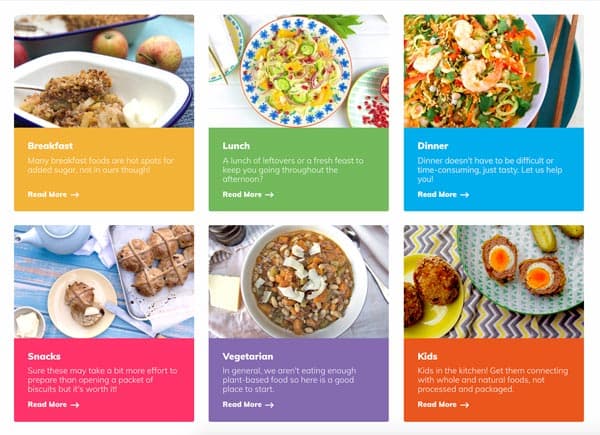Blog
Shake it off! The down low with weight loss shakes.
 In a world where we are now more obese than underweight, there is a call for action to take charge of health, and lower the kilos.
In a world where we are now more obese than underweight, there is a call for action to take charge of health, and lower the kilos.
Meal replacements have for a long time been the golden ticket to rapid weight loss. There are shakes, soups and bars, packed with protein designed to keep you full, whilst eating less overall. They have, in fact, proven effective in assisting many people lose weight in the short term – including in studies funded by meal replacement manufacturers (unsurprisingly).2,5,6
However there is no replacement for the fibre our gut flora loves and the power of health supporting phytonutrients you get from real, whole plants – no matter what the concoction of ingredients, and added vitamins and minerals.
Now don’t get us wrong – meal replacements have their place. For some, they can be used for those who struggle to consume food, perhaps due to physiological or medical reasons. For others, undertaking a meal replacement regime for a couple of weeks may assist in rapid weight loss, and the resetting how much one needs to feel full.
If weight loss is the goal, what happens when you cease the shakes?
Old habits die hard
Shake session done, the kilos have dropped off, and you are set to get back into eating three square meals a day again.
But how do we keep the kilos off?
A critical factor to maintaining weight loss is changing the habits that may have contributed to weight gain in the first place. By and large, a meal replacement scheme won’t encourage a change to eating habits.
In the meantime, let’s take a look at what is available in meal-replacement-shake-land, and see if we can separate the good from horrifyingly terrible.
What is out there
Below we have outlined some of the key competitors in the Australian meal replacement shake market.
What many look for is low kilojoule and high protein content. Fibre is often included in the fray as well, but often only small amounts. The protein and fibre satiate, and the shakes are often sold as part of a weight loss plan, including meal suggestions.
What we are largely concerned with here, are the quality of ingredients, and the sugar content. Here is what we found (and you may be surprised):
Optifast
Hello sugars! Fructose, sugar and glucose syrup all feature on this ingredient list, with fructose rocking in at number 3. In addition, naturally derived and artificial sweeteners make an appearance, to really encourage our taste buds to hold on to our sweetness desire.
Celebrity slim
Oh dear, Celebrity Slim. Really? Following claims of containing nutrients to ‘improve your health’, the second listed ingredient in their chocolate shake is fructose. High consumption of free form fructose is one of the major reasons why sugar sweetened beverages are associated with all manner of metabolic disease.4
Optislim
Within the first 5 ingredients, there is sugar and fructose. Maltodextrin and ‘sweetener’ are added after. What on earth do these products taste like without the sweeteners, to justify adding this much?
Tony Fergusson
Not ideal, but faring a little better than the aforementioned so-called food substitutes, Tony Fergusson’s line are sweetened with glucose syrup solids, maltodextrin and artificial sweeteners – but it also contains some anti-caking agents and hydrogenated vegetable oil, which screams all kinds of fake your body won’t recognise as food.
Isagenix
Purported as a gateway into ultimate healthy existence, the Isagenix shake is a little better with respect to ingredients, but low and behold, our old mate fructose is the second ingredient to feature following their whey protein blend.
IsoWhey
The IsoWhey blends are by far the kindest of this bunch when it comes to sweeteners, and quality of ingredients. Sweetened only with xylitol, it is low GI, but xylitol is a highly processed sweetener. The IsoWhey blend is higher in fibre and protein than most, and fortified with a wide range of minerals and vitamins, as well as enzymes, prebiotics and probiotics.
| Product (Chocolate varieties) | Amount of Sugar |
| Optifast | 17.8 |
| Optislim VLCD | 14.2g |
| Celebrity Slim | 24.6g |
| Tony Fergusson Classic | 8.1g |
| Isagenix | 11g |
| IsoWhey | 1.5g |
Note: sugar amount above are per serve, excluding lactose from added milk, based on being served with water, unless otherwise specified.
These are designed as weight loss products, yet most contain high amounts of fructose. Excess added sugar intake, and especially fructose, is now related to obesity, heart disease and diabetes.1,3,4,7 Perplexing, much?
Shakes vs wholefoods
You have to question if replacing a meal with a highly processed, artificial formula in place of real food, is really worth it? Let us not forget, nature has created lovely parcels of synergistic nutrients for us to consume in moderation. Attempting to replicate that is a bigger task than we give credit for.
Plus, these meal replacements tend to be far more expensive than food prepped at home. Granted finding time, or the inspiration, to get into the kitchen, may be difficult for some. However eating is wonderful! By persisting with creating your own, simple, wholesome meals (we have inspiration a plenty on the website or in our books), eventually taste buds will adapt, cravings will shift, and good health will blossom.
Still keen to shake it off? Before you do, it is a good idea to check in with your health care practitioner, who can monitor progress, any health concerns, and offer recommendations when required.
References:
- Basciano, H, Federico, L, & Adeli, K 2005, ‘Fructose, insulin resistance, and metabolic dyslipidemia’, Nutrition & Metabolism, vol. 2, pp. 5-14
- Heymsfield, SB, van Mierlo, CJ, van der Knaap, HM, Heo, M, & Frier, HI 2003, ‘Weight management using a meal replacement strategy: meta and pooling analysis from six studies’, International Journal Of Obesity And Related Metabolic Disorders: Journal Of The International Association For The Study Of Obesity, vol. 27, no. 5, pp. 537-549
- Ludwig, DS, Peterson, KE, & Gortmaker, SL 2001, ‘Relation between consumption of sugar-sweetened drinks and childhood obesity: a prospective, observational analysis’, Lancet, vol. 357, no. 9255, p. 505.
- Malik, VS, & Hu, FB 2015, ‘Fructose and Cardiometabolic Health: What the Evidence From Sugar-Sweetened Beverages Tells Us’, Journal of the American College of Cardiology (JACC), vol. 66, no. 14, pp. 1615-1624 10p
- Poston, WC, Haddock, CK, Pinkston, MM, Pace, P, Karakoc, ND, Reeves, RS, & Foreyt, JP 2005, ‘Weight loss with meal replacement and meal replacement plus snacks: a randomized trial’, International Journal of Obesity, vol. 29, no. 9, pp. 1107-1114.
- Treyzon, L, Chen, S, Hong, K, Yan, E, Carpenter, CL, Thames, G, Bowerman, S, Wang, H, Elashoff, R, & Li, Z 2008, ‘A controlled trial of protein enrichment of meal replacements for weight reduction with retention of lean body mass’, Nutrition Journal, vol. 7, p. 23
- Yang, Q, Zhang, Z, Gregg, EW, Flanders, WD, Merritt, R, & Hu, FB 2014, ‘Added sugar intake and cardiovascular diseases mortality among US adults’, JAMA Internal Medicine, vol. 174, no. 4, pp. 516-524











